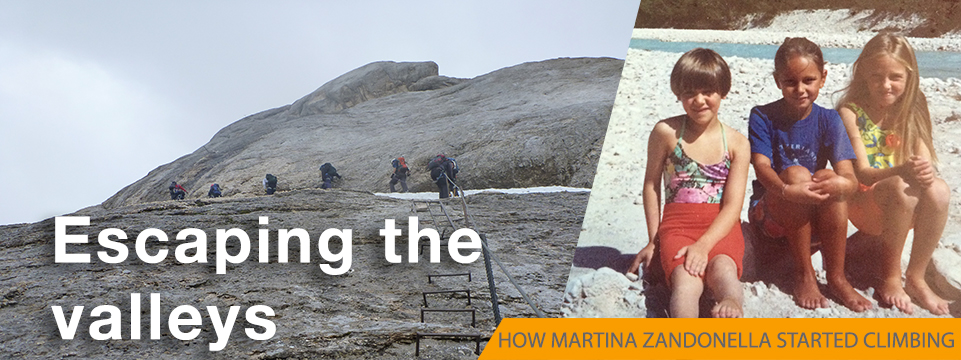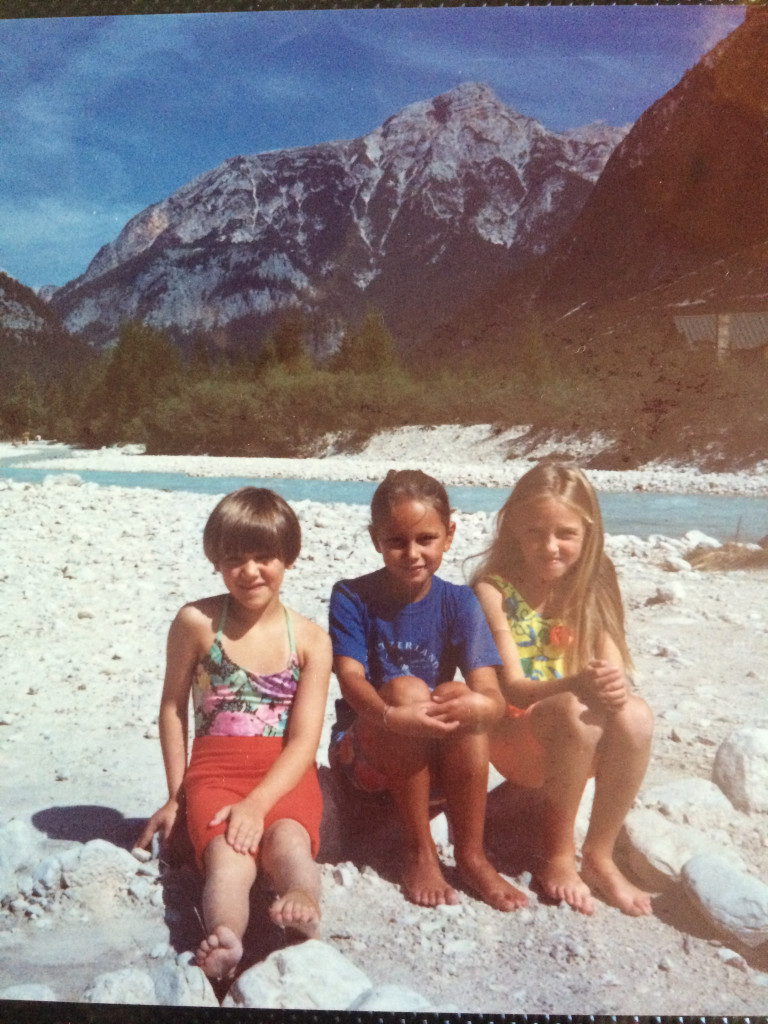By Martina Zandonella
“Come on… Cross it! ”
“But it is cold and the rocks are rolling on my feet!”
My little friends and I nagged each other on. “Come on, let’s see who can go the furthest.”
“Oh is so cold.”
“One step at the time. Watch the current!”
Many days of my childhood where spent on the side of a river called Boîte, in the Italian mountain range of the Dolomites, challenging ourselves to cross it. We would make some progress, finding the best spots to get through, most of the time turning back when the current was too strong for us, others finally making it to the other side. Once we had mastered the river crossing, there was only so much challenge and entertainment that we could find on the valley floor.
The vertical exploration started this way. In a valley with beautiful mountains rising up on every side, we started hiking, clambering and scrambling up. Of course we would do this with the parents if they were with us, but most of the time I was just with my grandparents who would, somehow reluctantly, allow us to explore the mountains by ourselves.
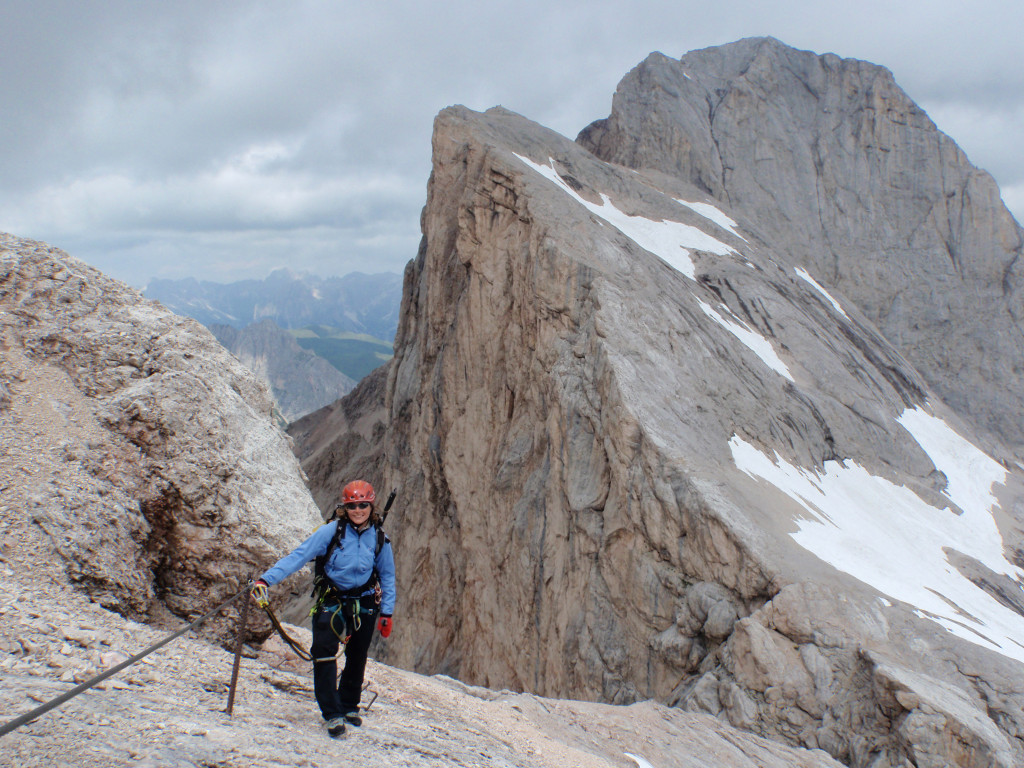
Via Ferrata, cabled and laddered paths dotted around Europe, were an amazing opportunity to start scrambling without having to worry about the ropes and equipment.
The metal cables attached to the rock where initially a tourist attraction in the Alps in the 1800s. With the First World War and the siege of the mountains, many via Ferrata were constructed and used by troops to gain high ground and overcome obstacles. Following the war then once again became a popular attraction for tourist that wanted to climb up on the mountains with more exposure than the regular path. The hardest passages of the via Ferrata have metal ladders and artificial steps built in to overcome the smooth rock or steepest sections. The obvious challenge for us would be to to try and climb just the rock around these “difficult” sections.
The years passed between Ferrata, walks, bike rides and big mountain climbs with parents. Their ideal holidays involve biking tours and trekking trips to interesting foreign countries and some high alpine peaks to add to the challenge. I took to this and loved the travels, the snow covered mountains, the glaciers and the different cultures.
After a few more trips up the ferrata routes I discovered that although they were of a low technical difficulty, the consequences of a fall were much more serious due to the nature of the safety systems used! At my desire to find out more about “the roped climbing,” my parents suggested the classic basic climbing course of the CAI (Italian Alpine Club). So here we go, this is how I started!
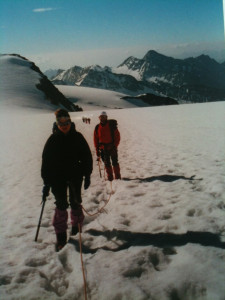
We went at the local crag and started with the techniques. The highlight of the course was a weekend excursion with a multipitch climb in the Julian Alps. I remember a sense of expectation and excitement walking up to the mountain hut where we would spend the night before. My mum and I got caught in a hailstorm going up and we had to find some shelter under boulders. It was all very exciting!
The Julian Alps are steep mountains with huge elevations from the bottom valleys to the tops. Climbing on them makes sense to take the direct route up and avoids perilous and choosy paths. The climb was exciting to me. One of the instructors was leading and another student and I were following on this bolted multipitch. We gained height without thinking about the effort, so absorbed in the moves, holds, footholds, rope management, etc. The views got better as we gained height and my body body got more tired. The exposure thrilled me and the big storm clouds puffing up was another uncertainty. I loved all of this and the fact that we did not have to follow the cables! Once back on the ground, I felt a sense of achievement for that adventure that was not just the climbing in itself but getting to it and returning safely.
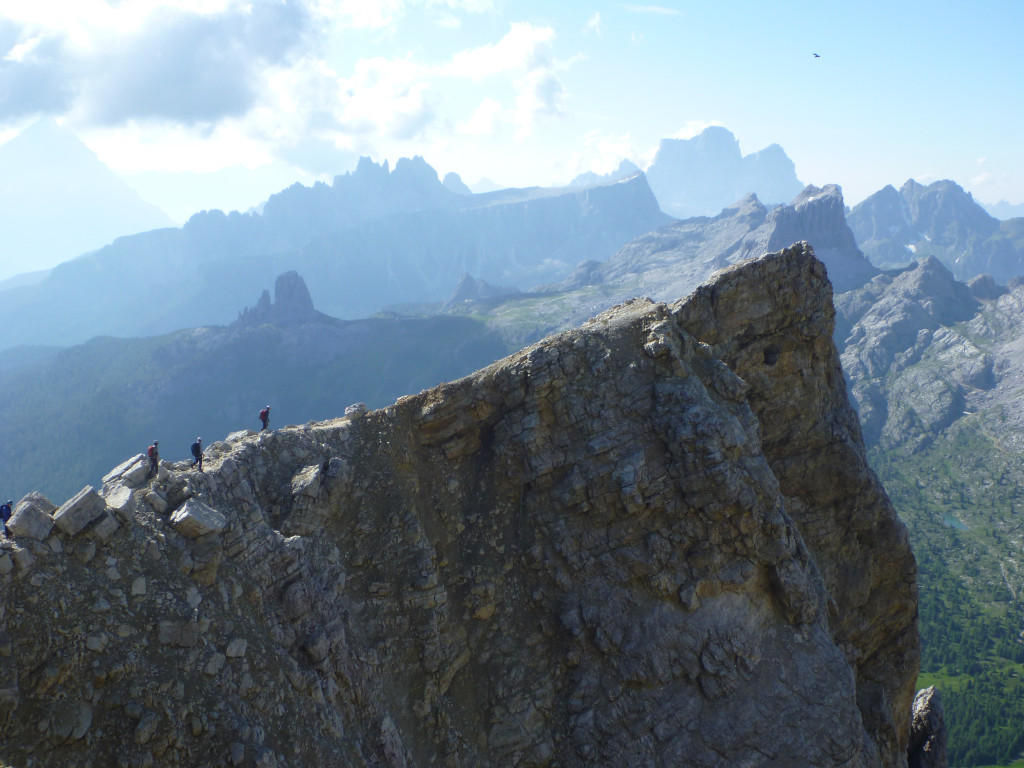
The climbing continued during other seasons at my local crag but, as a busy 15-year-old, I had so much to do with my life: gymnastics, cycling, dance, school… and many adventures! By the time I moved to England for University I was eager to try yet new activities and I neglected climbing and the mountains. After a few years, during a visit in Cortina, I remembered it all. I felt a calling back to the mountains for how much beauty, excitement, exhilaration and peace they gave me.
The closest thing to familiar mountains that I could find on old flat England was rock climbing. So I joined the mountaineering and climbing club and I soon discovered to my horror the British obsession with trad climbing! I did not understand why they would not bolt the rock and make it safe, nor why some horrid bits of rock were climbed at all!
At this time I met the man that would become my husband who, with lots of patience and endless hours, convinced me that trad climbing was not bad after all. He taught me intricacies of placing gear and strategies for climbing (that I am still working on!).
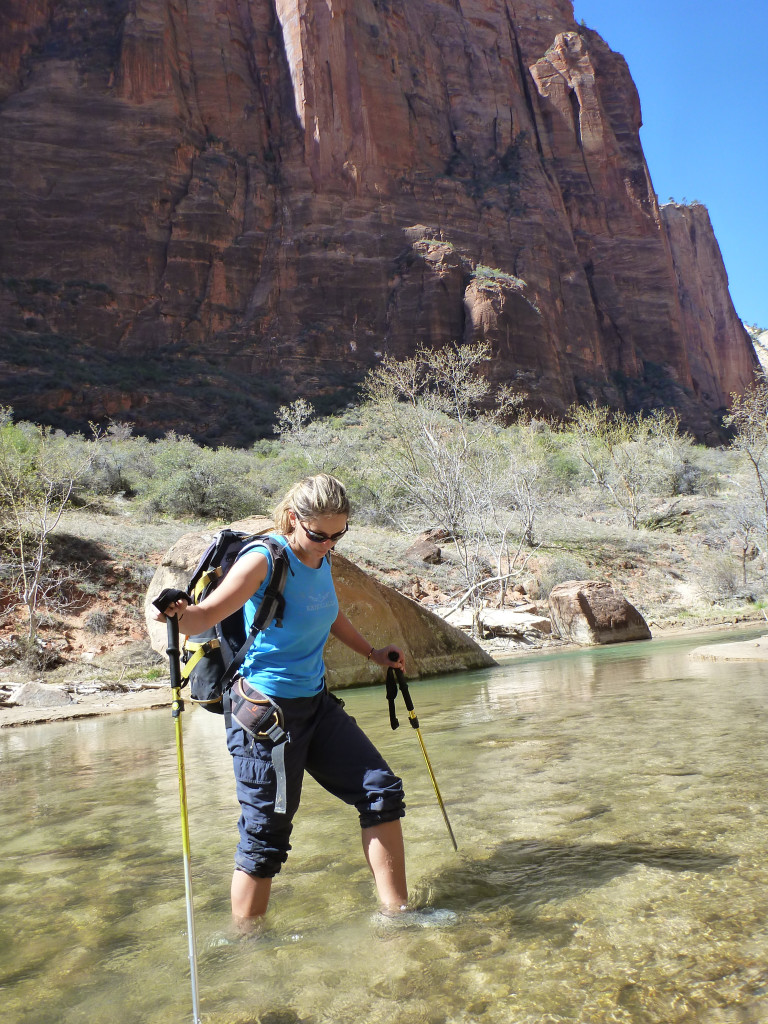
A shiver runs down my spine. “Come on, cross it!”
“Oh it is cold! I really don’t want to fall in.”
Memories of the Boîte crossing come back to mind. Luckily the river is no way near as strong here, or at least that little growing I’ve done in these years might have made a difference! Heavy packs on our backs, we are ferrying loads to the bottom of the climb in Zion. I look up at the buttress with mixed apprehension and excitement. The following night I am standing precariously on a portaledge halfway up the buttress, half in awe and half terrified of tipping everything, and myself, off it. What am I doing here again? Oh yeah, I remember! Vertical exploration, escaping the valleys, adventure. … I look across at Angels’ Landing where people are waiting in line to get to the top. Oh yes, and avoiding the cables!

